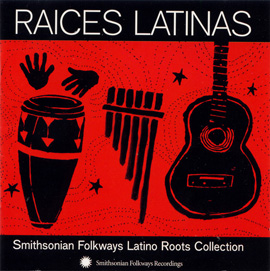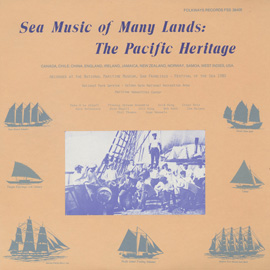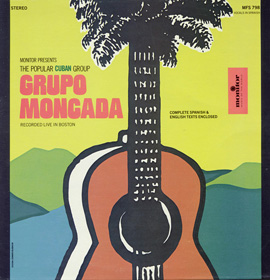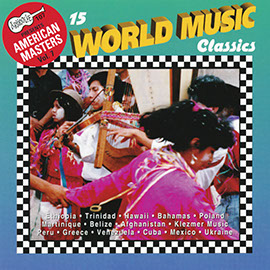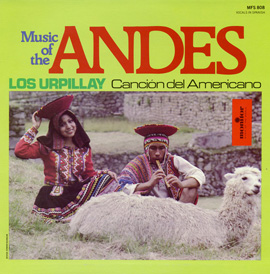Summary:
Students will learn about the music of the New Song movement by engaging with the melodies, rhythms, and lyrics of four selections from the Cancion Protesta: Protest Songs of Latin America album. This will teach them about the role music can play in social protest, as well as the specific historical, political, and cultural contexts of the songs.
Suggested Grade Levels: 9–12, college/university
Countries: Chile and Cuba
Region: Latin America
Culture Group: Latin American
Genre: Nueva canción and nueva trova
Instruments: Voice and guitar
Language: Spanish
Co-Curricular Areas: History, social studies, political science
National Standards: 1, 2, 6, 7, 8, 9
Prerequisites: None
Objectives:
- Actively listen to four songs
- Discuss the environment in which this album was recorded and the overarching genre of New Song, as well as the cultural and political specificities of Chile and Cuba
- Tap rhythms
- Conduct beats
- Sing and gesture the shape of melodies
- Listen for instrumentation
- Identify musical similarities and differences between nueva canción and nueva trova
- Read the lyrics of the songs and discuss their meanings
Materials:
- Musical selections from Cancion Protesta: Protest Songs of Latin America on Paredon Records
- Video: “Nueva Canción”
- Maps and images of Chile and Cuba
- Images of Violeta Parra and Varadero Beach
Lesson Segments:
Chile
- “Coplas del Pajarito” (National Standards 1, 6, 8, 9)
- “Me Gustan los Estudiantes” (National Standards 1, 6, 9)
Cuba
- “Por la Vida” (National Standards 1, 2, 6, 9)
- “Varadero” (National Standards 6, 7)
Lesson 1: “Coplas del Pajarito”
-
Locate Chile on a map of South America.
- Discuss the significance of the 1967 meeting of protest musicians from many different countries during which this album was recorded.
- Introduce the concept of New Song, the genre of protest songs that comprises this album. This was a musical movement that began with the folkloric efforts of musicians such as Violeta Parra (Chile) and Mercedes Sosa (Argentina), who incorporated regional folk musical elements in their songs.
- Watch the “Nueva Canción” video for further context.
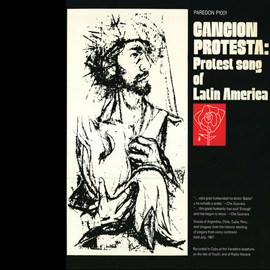
“Coplas del Pajarito (The Little Bird's Complaint)” from Cancion Protesta: Protest Songs of Latin America (1970) | PAR01001
- Listen to “Coplas del Pajarito.”
- Tap what feels like the strong beat.
- Lift a hand along with each chord change in the guitar part (note: the chord changes triply as often during the chorus than during the verses).
- Ask: What form is the song in? (Verse and chorus.)
- Gesture the shape of the melody with your index finger.
- Sing along with the melody.
- Lift a hand along with the chord change while singing the melody, then ask the students if that changed their sense of where the beat was.
- Read/summarize the English translation of the lyrics:
THE LITTLE BIRD'S COMPLAINT
Up in the branch of a cactus,
A little bird was complaining:
Everyone wants to be rulers,
Rulers with chains and with shackles.
(chorus)
Oh yes, oh no, dear little bird of my heart!
Oh yes, oh no, little bird so full of pain.
Latin American brothers,
Lift up our heads and be proud.
And let's demand from "the man"
All of our promises filled!
Latin American brothers,
Our lands are not so poor!
But they come here from far away,
And leave us without a penny!
When a poor person asks for help,
They deny it on the spot.
They tell him so many stories
That he goes away thinking he's happy.
And if there's taxes to pay,
They send first to the poor.
The rich man is so very busy,
Hiding his dough under cover.
The nation demands of its sons
Respect and prudent wisdom.
The sons give back to their country
Governors with very thick skins.
Up in the branch of a cactus,
The little bird sings no more.
From looking at so much injustice,
His little throat has gone dry!
Lesson 2: “Me Gustan los Estudiantes”
- Discuss the Parra family.
- The Parra family was known for its artistic and folkloric efforts. Violeta Parra, mother of Angel Parra (who recorded this song) is lauded as having been at the forefront of nueva canción Chilena, a musical style that fused highly developed artistry with political messages on behalf of the common people.
- Violeta’s children (including Angel and Isabela, who each contributed recordings to this album) carried on her tradition and often sing her songs, one of which is “Me Gustan los Estudiantes.”
- Violeta’s brother, Nicanor, was also a well-known academic poet.

“Me Gustan los Estudiantes (I Love the Students)”
from Cancion Protesta: Protest Songs of Latin America (1970) | PAR01001
- Listen to “Me Gustan los Estudiantes.”
- Conduct along with the recording in the time signature to which you feel most inclined.
- Ask students to identify the time signature of the song.
- Using an index finger, trace the shape of the melody.
- Ask the students to reflect on what they just heard and gestured. Did the melody make large leaps in pitch (i.e., are there many large intervals), or did the pitch seem to move up or down in relatively small intervals?
- Sing along with the melody while conducting the time signature identified by the students.
- Ask the students which form the song is in.
- Read/summarize the English translation of the lyrics:
I LOVE THE STUDENTS
I love the students,
Garden of joys,
Birds that do not fear
Either beasts nor police,
Nor frightened by bullets
Or packs of barking dogs,
Caramba, that's a great thing.
Long live astronomy!
I love the students
Who roar like the winds
When you stuff their ears
With talks of cassocks or regiments!
They are like birds,
Free as the elements!
Caramba, that's a great thing.
Long live experiments!
I love the students
because they are the yeast
Of the bread that comes from the oven
Full of wholesome flavor
For the mouth of the poor
Who eats in bitterness.
Caramba, what a great things.
Long live literature!
I love the students
Who are ready for a fight
If you try to say it's wheat
Knowing perfectly well it's chaff,
And who don't act deaf and dub
If you lay your cards on the table.
Caramba, that's a great thing!
Long live the books of law!
Lesson 3: “Por la Vida”
- Locate Cuba on a map. Compare that location to that of Chile, and acknowledge the geographic reach of the New Song movement.
- Discuss the role of Cuba and Fidel Castro in the organization of the environment from whence this album came. Tell the students that the gathering where this album was recorded occurred in 1967, when Fidel Castro organized several events that ran parallel to each other that brought together a multitude of artists and activists to exchange ideas and creative work.
- These events were hosted by Cuba, and the main event was called OLAS, which is both an acronym for Organization of Latin American Solidarity as well as the word for “waves” in Spanish.
- The artists who attended this musical gathering were from as far away as Italy, Tanzania, and Australia, as well as from various parts of Latin America. The CD, however, contains only recordings by artists from Latin America, including those from Uruguay, Peru, and Argentina, in addition to those from Cuba and Chile mentioned in this exercise.
- OLAS was created in response to the Vietnam War.
- Listen to “Por la Vida.”
- Clap on the offbeat guitar chords while paying attention to the song’s tempo.
- Ask students to reflect on what they have just clapped. Did the offbeat guitar chords always occur in the same rhythmic pattern? Did the tempo of the song stay consistent throughout?
- Gesture the shape of the bass line played by the guitar.
- Sing the bass line on a doo and clap the offbeat guitar chords.
- Sing the vocal melody on a nah.
- Now divide the class in two parts, asking one half to sing the vocal melody while the other half sings the guitar part and claps the offbeat guitar chords (each in the respective vocables assigned in the earlier steps).
- Read the English translation to the song (see below) and ask students to summarize the general message based on what they’ve just heard.
- Ask: Do you feel that the stylistic elements of the song match the message you have just described? Which elements are those?
It would be absurd and without reason
Not to know what to do with our joys,
To grip them in our hands,
And to go on walking with them
Through life, through life.
It woudl be stupid and criminal
To turn our backs on those who struggle every day,
Not to give them a hand,
But to go on shielded with it,
Through life, through life.
And I'll only tell you
How the great marjority thinks here,
About the question of these times:
If we are just like you,
And you aren't able to be happy,
What's the use of all our joys,
Joys, joys?
It would be absurd and criminal
Not to help you with more force every day,
Not to place ourselves at your side,
Nor to struggle here, with you
For life, for life,
For life.
Lesson 4: “Varadero”
- Discuss the significance of Varadero Beach.
- Varadero Beach was where these musicians gathered in 1967.
- This recording, along with two others, was created while the group of musicians sat by the shore.
- This song was recorded by Carlos Puebla who, in addition to being a musician, also served in the army.
- “Varadero” is a song of celebration about how the beach shifted from being accessible solely to rich white tourists to now being available to the common people, such as the musicians on this album.
- In light of this information, read the English translation of the lyrics:

“Varadero (Now It's Time for You and Me)”
from Cancion Protesta: Protest Songs of Latin America (1970) | PAR01001
VARADERO
Do you remember when Varadero
Was for the rich, nobody else,
And when the beach, on the beautiful beach,
The people were not able to even set foot?
That was in the hands of the "Misters"
And English was just about the only language.
Until one day the fun and games were cut off,
And ever since, Varadero belongs to the people!
(chorus)
And now, yes, and now yes,
Now Varader is for you and for me! (2x)
Now Varadero is no longer
The place where nearly always English was heard,
(chorus)
The grand palace of the great lord
Is enjoyed now by the worker.
(chorus)
And where Mr. DuPont used to live,
Now lives the cane-cutter José Ramón!
(repeat first verse and chorus)
- Listen to “Varadero.”
- Keep the beat by stepping from left to right.
- Continue stepping to the beat while gesturing the direction of the guitar chords with your shoulders (i.e., when the chord moves up, so do your shoulders). This can be somewhat stylized or dancelike.
- Sing the guitar part while maintaining the beat by stepping from left to right.
- Sing the melody to the chorus.
- Sing the melody of the verses.
- Divide the class in half, asking everyone to continue stepping to the beat while one half of the class sings the verses and the other sings the chorus.
Assessment
- Play “Coplas del Pajarito” and “Me Gustan los Estudiantes” again, asking students to take note of the stylistic elements of the song. For instance, what is the instrumentation? The language of the lyrics?
- Remind students of the messages found in each of the lyrics. Are they similar? If so, how?
- Ask students what makes each song different from the other. For example, if they had to take a listening quiz on both of these, what stands out to them as that which would make them remember the context and qualities of each song?
- Now play “Por la Vida” again. Ask students how the song is similar to the two from Chile. Is the language the same? The instrumentation? The tempo?
- Ask students what makes “Por la Vida” different from the two songs from Chile. Again, how might they remember the specificities of the song?
- Remind the students of the message of “Por la Vida.” How is it similar to or different from the two Chilean songs?
- Play “Varadero” again. Ask students if it is similar to “Por la Vida” stylistically, and if so, how? How is it different?
- Finally, ask students to reflect on all the pieces. What is common between all four? Are the messages similar? Are all the songs of similar tempo and instrumentation? Which song do the students feel stands out as being the most different from the others, and why?



